Filter by
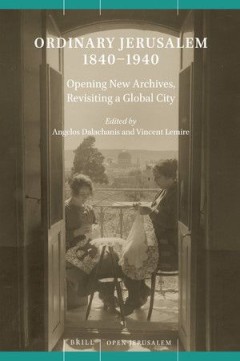
Ordinary Jerusalem, 1840-1940 Opening New Archives, Revisiting a Global City
In Ordinary Jerusalem, Angelos Dalachanis, Vincent Lemire and thirty-five scholars depict the ordinary history of an extraordinary global city in the late Ottoman and Mandate periods. Utilizing largely unknown archives, they revisit the holy city of three religions, which has often been defined solely as an eternal battlefield and studied exclusively through the prism of geopolitics and religio…
- Edition
- -
- ISBN/ISSN
- 9789004375741
- Collation
- -
- Series Title
- -
- Call Number
- -
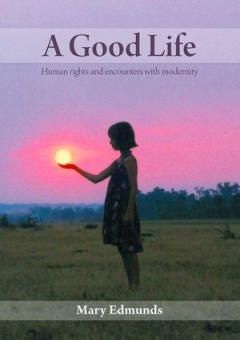
A Good Life : Human rights and encounters with modernity
This is a book about hope, the hope that we have ways to live together in a rapidly changing world which will enable us to ‘live a good life in the modern world’. It goes beyond hope and suggests how we may do this.The how is a critical question at a time when rapid change is impacting on all societies. What will be the human outcomes of political turmoil in the Middle East…
- Edition
- -
- ISBN/ISSN
- 9781922144676
- Collation
- -
- Series Title
- -
- Call Number
- 909.82 EDM g
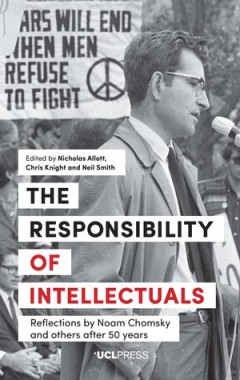
The Responsibility of Intellectuals
With the publication of ‘The Responsibility of Intellectuals’ half a century ago, Noam Chomsky burst onto the US political scene as a leading critic of the war in Vietnam. Privilege, he argues, brings with it the responsibility to tell the truth and expose lies, but our intellectual culture only pays lip-service to this ideal. The essay has been described as ‘the single most influential p…
- Edition
- -
- ISBN/ISSN
- -
- Collation
- -
- Series Title
- -
- Call Number
- 909.82 RES r
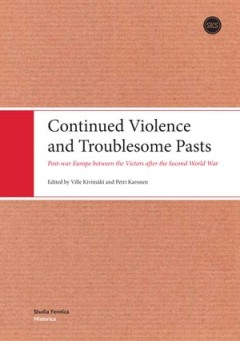
Continued Violence and Troublesome Pasts: Post-War Europe Between The Victors…
In most European countries, the horrific legacy of 1939–45 has made it quite difficult to remember the war with much glory. Despite the Anglo-American memory narrative of saving democracy from totalitarianism and the Soviet epic of the Great Patriotic War, the fundamental experience of war for so many Europeans was that of immense personal losses and often meaningless hardships. The anthology…
- Edition
- -
- ISBN/ISSN
- 9789522228574
- Collation
- -
- Series Title
- -
- Call Number
- 909.81
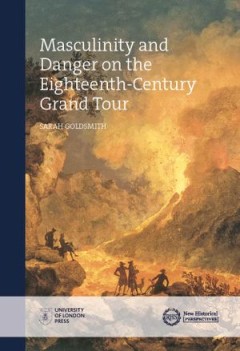
Masculinity and Danger on the Eighteenth-Century Grand Tour
The Grand Tour was a journey to continental Europe undertaken by British nobility and wealthy landed gentry during the seventeenth and eighteenth centuries. As a rite of passage, the Tour also played an important role in the formation of contemporary notions of elite masculinity. Examining letters, diaries and other records left by Grand Tourists, tutors and their families, this book demonstrat…
- Edition
- -
- ISBN/ISSN
- 9781912702220
- Collation
- -
- Series Title
- -
- Call Number
- -

An Equal Burden
An Equal Burden forms the first scholarly study of the Army Medical Services in the First World War to focus on the roles and experiences of the men of the ranks of the Royal Army Medical Corps (RAMC). These men, through their work as stretcher bearers and orderlies, provided a range of labour, both physical and emotional, in aid of the sick and wounded. They were not professional medical careg…
- Edition
- -
- ISBN/ISSN
- 9780198824169
- Collation
- -
- Series Title
- -
- Call Number
- -
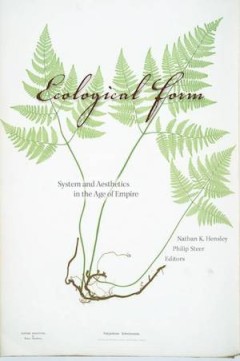
Ecological Form
Hensley and Steer look to join the conceptual tools of contemporary ecocriticism with the rich archive of nineteenth century thinking about imperial and ecological intertwinement. This collection of essays draws on that archive to demonstrate the relevance of Victorian thought for current theory and practice. Ecological Form argues that ecology, the empire, and literary thinking were inseparabl…
- Edition
- -
- ISBN/ISSN
- 9780823282128
- Collation
- -
- Series Title
- -
- Call Number
- -

Women's Writing in Contemporary France: New writers, new literatures in the 1…
The 1990s witnessed a veritable explosion in women's writing in France, with a particularly exciting new generation of writers coming to the fore, names like Christine Angot, Marie Darrieussecq and Régine Detambel. Other authors such as Paule Constant, Sylvie Germain, Marie Redonnet and Leïla Sebbar, who had begun publishing in the 1980s, claimed their mainstream status in the 1990s with new …
- Edition
- -
- ISBN/ISSN
- 9781526137999
- Collation
- -
- Series Title
- -
- Call Number
- -

William Warner's Syrinx: or, A Sevenfold History
William Warners Syrinx, or a Sevenfold History, may be the first English novel. Unlike others of the time, though, Warner wrote a realistic novel whose ancestors include the adventure stories of Alexandrine romance, and focus not on the tales of an aristocratic class but on the lives of middle-class individuals. Wallace A. Bacon’s critical edition brings Warner’s important novel –with its…
- Edition
- -
- ISBN/ISSN
- 9780810138230
- Collation
- -
- Series Title
- -
- Call Number
- -

A war of individuals: Bloomsbury attitudes to the Great War
This book draws together for the very first time examples of the 'aesthetic pacifism' practised during the Great War by such celebrated individuals as Virginia Woolf, Siegfried Sassoon and Bertrand Russell. In addition, the book outlines the stories of those less well-known who shared the mind-set of the Bloomsbury Group when it came to facing the first 'total war'. The research for this study …
- Edition
- -
- ISBN/ISSN
- 9780719060700
- Collation
- -
- Series Title
- -
- Call Number
- -
 Computer Science, Information & General Works
Computer Science, Information & General Works  Philosophy & Psychology
Philosophy & Psychology  Religion
Religion  Social Sciences
Social Sciences  Language
Language  Pure Science
Pure Science  Applied Sciences
Applied Sciences  Art & Recreation
Art & Recreation  Literature
Literature  History & Geography
History & Geography